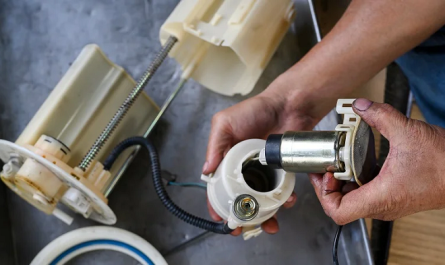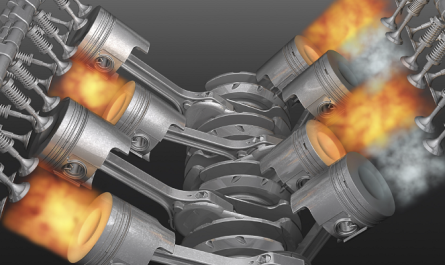1. Introduction
If your check engine light suddenly came on or your car started acting strangely—stalling, hesitating, or burning more fuel than usual—you might be dealing with a Bad Camshaft Sensor. This small but critical component helps your engine run smoothly by working with the crankshaft to control timing. When it goes bad, you’ll likely notice a range of performance issues. In this guide, we’ll explore the symptoms of a bad camshaft position sensor, what causes it to fail, and how to fix the problem before it leads to serious engine trouble.
2. What Does a Camshaft Sensor Do?
The camshaft position sensor monitors the rotation of the camshaft and sends this data to your car’s computer. It works with the crankshaft sensor to control engine timing, fuel injection, and spark. A properly working camshaft sensor ensures your engine runs efficiently. When it fails, timing gets thrown off—leading to issues like engine misfires, poor acceleration, or stalling. It’s a small part with a big job in keeping your engine performing its best.
3. Early Warning Signs of a Bad Camshaft Sensor
When a camshaft sensor starts to go bad, it often gives off subtle signs before completely failing:
- Check engine light: One of the first and most common signs.
- Engine stalling: Your car might suddenly shut off while driving.
- Hesitation during acceleration: You may notice sluggish throttle response.
- Hard starting: The engine may crank but struggle to start.
- Intermittent power loss: Especially noticeable during highway driving.
These symptoms can be easy to overlook at first, but they tend to get worse over time.
4. Advanced Symptoms and Engine Damage Risks
If you ignore the early signs, more serious symptoms can follow:
- Rough idling: The engine vibrates or runs unevenly at rest.
- Engine misfire: Timing issues cause the engine to fire incorrectly.
- Reduced engine power: Your car may go into “limp mode.”
- Poor fuel economy: The engine burns more gas to compensate for faulty timing.
- Transmission shifting issues: A failing sensor can confuse your transmission system.
- Strange exhaust smell: Caused by unburnt fuel due to improper timing.
Left untreated, a bad camshaft position sensor can lead to permanent engine damage or catalytic converter failure.
5. Causes of Camshaft Sensor Failure
Camshaft sensors can fail for several reasons, including:
- Heat damage: High engine temperatures can wear down internal components.
- Oil contamination: Oil leaks can seep into the sensor, disrupting function.
- Wiring issues: Frayed or disconnected wires can interrupt signals.
- Physical damage: Impact during engine work or debris can break the sensor.
- Moisture exposure: Water infiltration through connectors or engine bay cracks.
Understanding these causes can help you take preventive steps and avoid sensor failure in the future.
6. OBD-II Codes for Camshaft Sensor Issues
When the camshaft sensor is faulty, your car’s onboard diagnostics will often trigger a P0340 or P0341 error code. These are among the most common indicators of camshaft-related problems. Using an OBD-II scanner, you can quickly check for these codes at home. If the code pops up with any of the symptoms mentioned above, it’s a strong sign your camshaft position sensor needs attention.
7. How to Test a Camshaft Position Sensor
Testing a camshaft sensor isn’t too difficult if you have the right tools. Here’s how:
- Visual Inspection: Check for broken wires, damaged connectors, or oil leaks.
- Multimeter Test: Use a multimeter to test resistance and voltage readings (refer to your car’s manual for specs).
- OBD-II Scan: As mentioned, scan for relevant codes like P0340.
- Compare Live Data: Advanced scanners can display real-time RPM signals from the camshaft sensor.
If you’re unsure or uncomfortable doing this yourself, it’s best to have a trusted mechanic run a diagnostic.

8. Can You Still Drive With a Bad Camshaft Sensor?
Technically, yes—but it’s not recommended. Driving with a bad camshaft sensor can:
- Cause your car to stall in traffic
- Lead to engine misfires or rough idling
- Damage your catalytic converter due to unburnt fuel
- Reduce fuel efficiency dramatically
- Leave you stranded if the sensor fails completely
For short trips, you might get by, but long-term driving with this issue can be dangerous and costly.
9. Replacement Guide
If your sensor is bad, here’s what to expect for replacement:
- Cost: $50–$150 for the part; $100–$300 with labor depending on your car model
- DIY vs Mechanic: Many camshaft sensors are easy to access and replace at home
- Tools Needed: Socket set, possibly a torque wrench, and gloves
- Time Required: Usually 30 minutes to 1 hour
Always refer to your vehicle’s manual or consult a professional if unsure.
10. Camshaft Sensor vs Crankshaft Sensor
While they sound similar, they serve different purposes:
| Feature | Camshaft Sensor | Crankshaft Sensor |
|---|---|---|
| Function | Monitors camshaft rotation | Tracks crankshaft position |
| Failure Symptoms | Misfires, stalling, hard starts | No start, rough idle, misfiring |
| Common Code | P0340 | P0335 |
| Importance | Controls ignition & fuel injection | Engine timing & RPM signal |
Some symptoms may overlap, which is why proper diagnostics are essential.
11. Prevention Tips for Longer Sensor Life
You can reduce the risk of sensor failure by following a few maintenance habits:
- Keep the engine clean: Prevent oil leaks that can damage the sensor
- Check wiring regularly: Especially after engine repairs
- Use quality engine oil: Reduces residue buildup
- Avoid overheating: Fix coolant issues quickly
- Avoid cheap parts: Low-quality sensors often fail early
These tips can help your camshaft position sensor last longer and perform better.
12. Conclusion
A failing camshaft sensor may seem like a minor issue at first, but ignoring the symptoms of a bad camshaft position sensor can lead to serious engine trouble. Watch for warning signs like the check engine light, rough idling, or poor acceleration. If you notice any of these, run a scan or visit a mechanic. Quick action can save you from costly repairs and keep your vehicle running smoothly.


